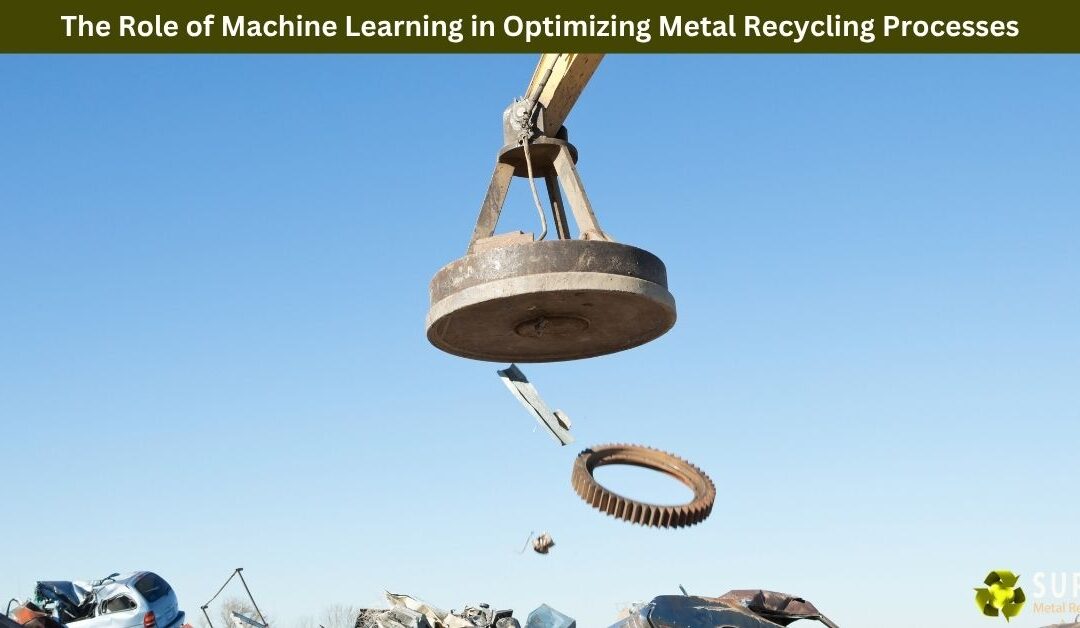Metal recycling has come a long way from the days of simply collecting scrap and melting it down. Today, it’s a complex, high-tech operation — and machine learning is quickly becoming a key player in making it faster, smarter, and more efficient.
If you’re not familiar with machine learning (ML), don’t worry — you’re not alone. At its core, ML is a type of artificial intelligence (AI) that allows computers to learn from data and improve over time without being explicitly programmed for every single task. It sounds futuristic, but chances are, you’ve already encountered it in your daily life — think of how Netflix recommends shows or how your phone’s voice assistant understands what you’re saying.
So, what does this have to do with recycling metal? Quite a lot, actually.
Smarter Sorting, Less Waste
One of the biggest challenges in metal recycling is sorting — figuring out what kind of metal you’re dealing with and separating it from other materials like plastic, rubber, or even different metals. Traditionally, this process has relied heavily on manual labor, magnets, and other physical separation techniques. It works, but it’s not always accurate or efficient.
Machine learning is changing that.
By training computer systems with thousands of images and chemical signatures of different metals, ML-powered machines can now identify and sort materials with remarkable precision. For example, advanced sensor-based sorting systems use cameras, x-ray fluorescence, and near-infrared sensors to “see” and classify scrap pieces as they move along a conveyor belt. ML algorithms then analyze this data in real time and direct the materials to the correct bins — faster than any human could.
This not only reduces contamination (which can ruin a batch of recycled material) but also increases the value of the final product by ensuring purity. And that’s good news for everyone — recyclers, manufacturers, and the environment.
Predictive Maintenance: Fewer Breakdowns, More Uptime
Another area where machine learning is making a real difference is predictive maintenance. In any recycling facility, equipment breakdowns are a major headache. Conveyor belts jam, shredders overheat, and balers wear down. When machines go offline, productivity drops — and costs rise.
With ML, recycling facilities can monitor equipment in real-time using sensors that track things like vibration, temperature, and pressure. The algorithms learn what “normal” operation looks like, and when something starts to go off-track — even just slightly — they raise a flag before a major breakdown happens.
It’s like having a mechanic who never sleeps, always watching, and can predict problems before they start. This keeps everything running smoothly and helps facilities avoid expensive repairs and downtime.
Smarter Forecasting and Inventory Management
Machine learning also plays a growing role in forecasting supply and demand, which is crucial in the scrap metal industry. Prices for metals like copper, aluminum, and steel fluctuate based on a variety of global factors — supply chains, economic shifts, even politics.
ML models can analyze historical pricing data, market trends, and real-time economic indicators to make informed predictions about future prices. This allows scrap yards and recycling companies to make smarter decisions about when to buy, sell, or hold onto materials.
Even better, it helps with inventory management. Instead of overstocking low-value materials or running short on high-demand metals, companies can use predictive algorithms to optimize their storage and logistics — saving both space and money.
Real-World Applications and Innovations
Some companies are already putting machine learning to work in amazing ways. For instance:
- ZenRobotics (Finland) developed AI-powered robotic arms that sort waste materials — including metals — with a high degree of accuracy. These robots continuously learn and improve as they sort, making them smarter every day.
- In the U.S., AMP Robotics uses ML and computer vision to sort materials in recycling facilities, drastically increasing the speed and accuracy of material recovery.
- And here in Australia, metal recyclers are starting to integrate AI-based systems into their facilities to stay competitive and reduce environmental impact.
These examples show that ML isn’t just a buzzword — it’s a practical tool that’s already making waves in the recycling industry.
It’s Not About Replacing People — It’s About Working Smarter
There’s often a worry that automation and AI will replace human jobs, but in reality, machine learning is more about enhancing the work that’s already being done. By taking over repetitive and time-consuming tasks, ML allows workers to focus on more skilled and meaningful parts of the job — like operating machines, improving customer service, or managing quality control.
It’s a partnership between people and technology, and when done right, it benefits everyone.
Just One More Thing…
Machine learning might sound like science fiction, but it’s becoming a powerful tool in today’s metal recycling world. From smarter sorting and equipment maintenance to forecasting prices and reducing waste, ML is helping the industry operate more efficiently and sustainably than ever before.
At Super Metal Recycling, we’re always looking for ways to improve the way we recycle and repurpose metal — and we’re excited about the role technology plays in that journey. The future of recycling is intelligent, data-driven, and surprisingly exciting.
And who knows? The next time your old washing machine gets scrapped, it might just pass through a system that’s thinking for itself — all in the name of smarter recycling.
If you are in Aspendale, and looking for a metal recycling service, this is the best way to visit us.
Super Metal Recycling
345 Frankston – Dandenong Road, Dandenong South VIC 3175
(03) 9706 4909


Recent Comments